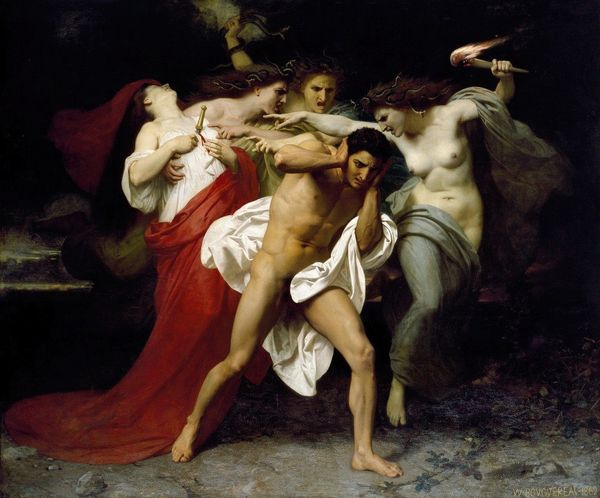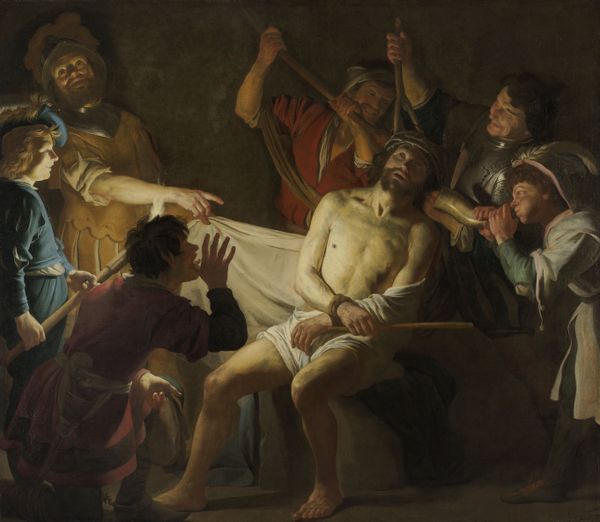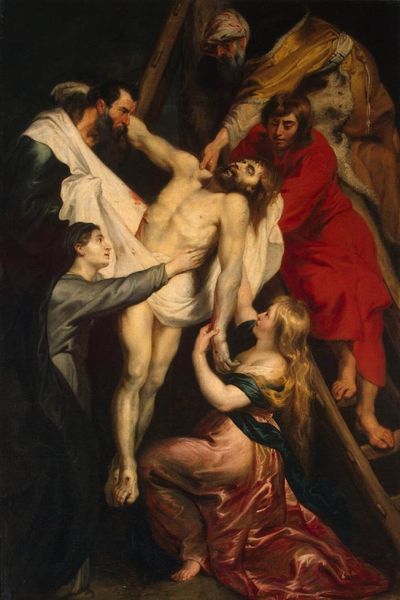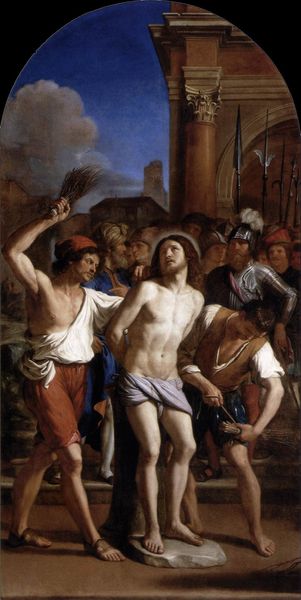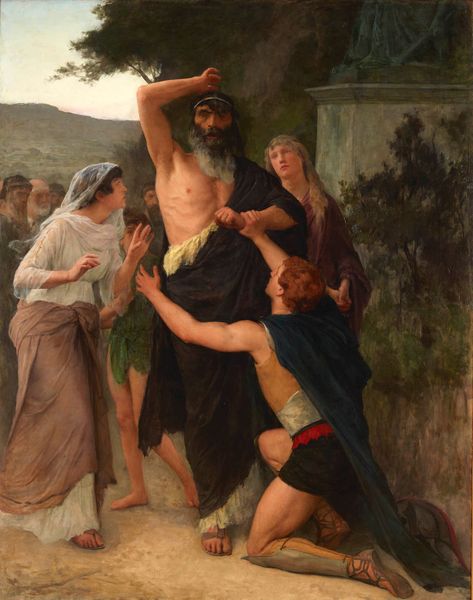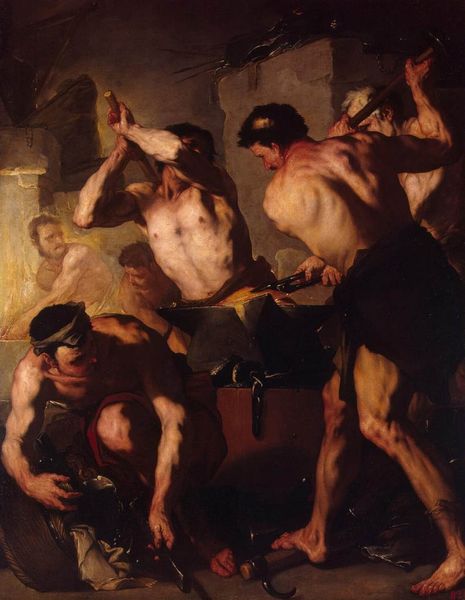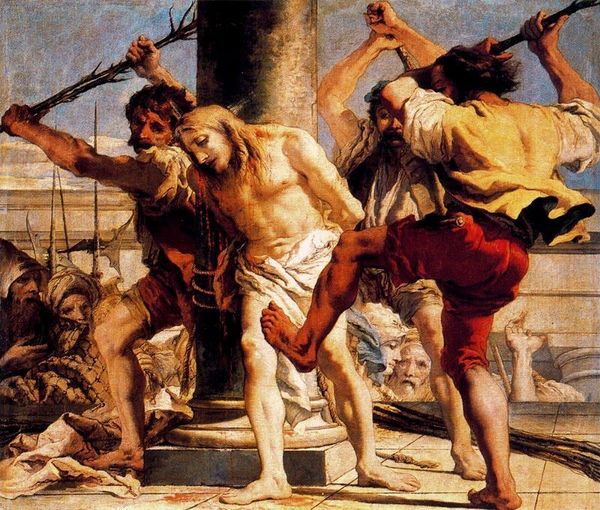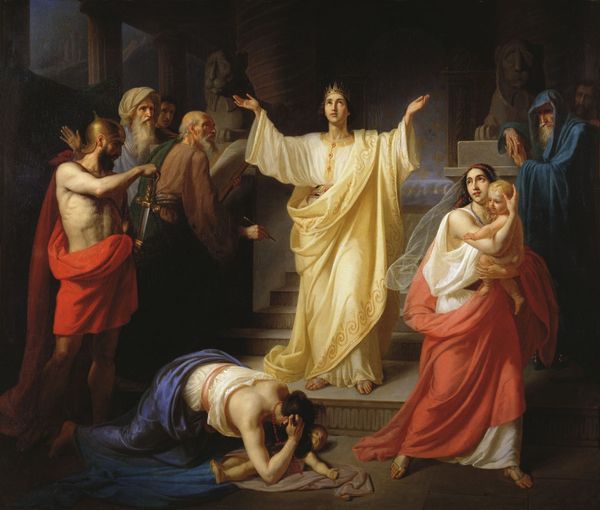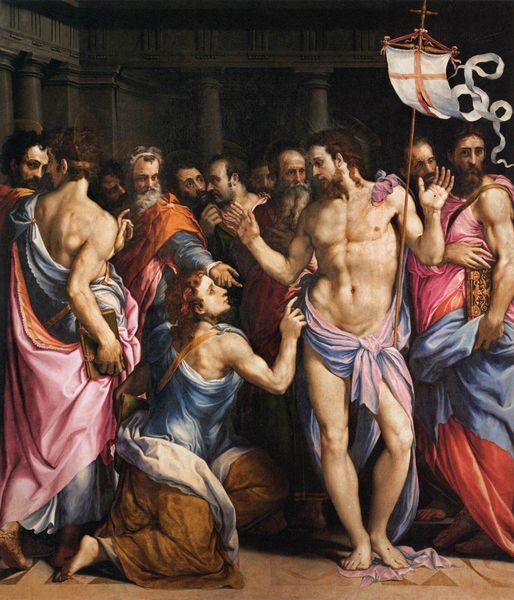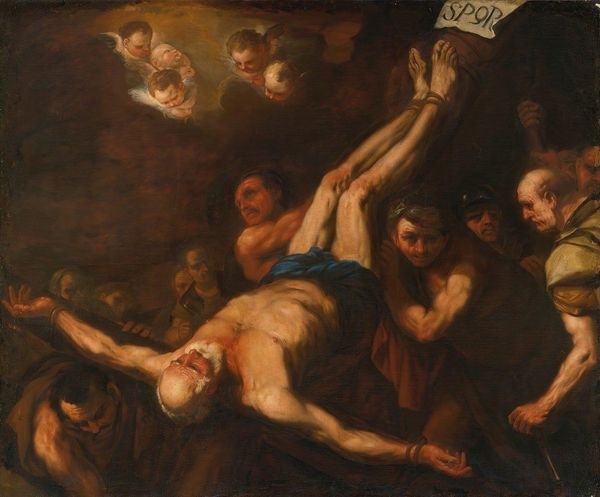
Copyright: Public Domain: Artvee
William Bouguereau painted "The Flagellation of Our Lord Jesus Christ" in the late nineteenth century, during a time of significant shifts in France's cultural institutions. This painting depicts a biblical scene of Jesus being whipped, surrounded by a crowd of onlookers. Bouguereau was known for his academic style, which closely followed the traditions of the French Academy of Fine Arts. The Academy favored classical and idealized forms, which you can see in the painting's composition and figures. This style was often seen as conservative and supported by the establishment. Yet, the emotional intensity and realism in this work also show a modern sensibility creeping into the art world, challenging traditional boundaries. The artwork's religious subject matter reflects the historical and cultural context of 19th-century France, where religious themes were still relevant, but society was beginning to question traditional beliefs. It is through understanding these historical, institutional, and social contexts that we can fully appreciate the complex meanings in art. Historical archives, critical essays, and cultural studies all help to provide this deeper understanding.
Comments
No comments
Be the first to comment and join the conversation on the ultimate creative platform.
